Despite differences in language, culture and nationality, the pioneers who crossed the Plains to the Salt Lake Valley shared a testimony of the restored gospel of Jesus Christ. They exhibited “faith in every footstep” as they journeyed more than a thousand miles through prairie, desert and canyons.
President M. Russell Ballard, Acting President of the Quorum of the Twelve Apostles, has spoken often about his love for pioneers, the faith that brought them west and his desire for Latter-day Saints to remember them.
“I have a deep conviction that if we lose our ties to those who have gone before us, including our pioneer forefathers and mothers, we will lose a very precious treasure,” said then-Elder Ballard in October 2017 general conference. “I have spoken about ‘Faith in Every Footstep’ in the past and will continue in the future because I know that rising generations must have the same kind of faith that the early Saints had in the Lord Jesus Christ and His restored gospel.”
In honor of the 175th anniversary since the first company of pioneers arrived in the Salt Lake Valley in 1847, members of the Quorum of the Twelve Apostles share some of the pioneer stories from their families.
President M. Russell Ballard
Not only is President Joseph F. Smith President Ballard’s great-grandfather, he is his personal hero. President Joseph F. Smith was the youngest son of Hyrum Smith and the nephew of the Prophet Joseph Smith. President Smith was the last Church president to have known Joseph Smith, but he is known for much more.
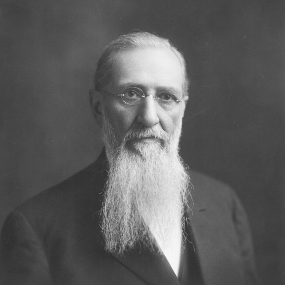
Apostle-pioneer-relatives
Joseph F. Smith2022 by Intellectual Reserve, Inc. All rights reserved.At 15 years old after having been orphaned for two years, he left to serve a Church mission in Hawaii for four years. Later, while serving as an Apostle and President of the Church, he developed visitors’ centers, helped free the Church from $1 million in bond debt, introduced family home evening and contributed to the Church in a variety of other ways.
In President Ballard’s eyes, Joseph F. Smith was an exemplary husband, father, missionary, builder, witness of the Restoration and visionary.
In reference to the busts of Joseph F. Smith, Hyrum Smith and Joseph Smith that sit in his office, President Ballard said: “As I look at the faces of these mighty prophets, I think I hear them saying, ‘Russell, get going! Do more; work a little harder while you still have time.’”
Elder Jeffrey R. Holland
Ellen Benbow’s father, Thomas Benbow, died when she was just 10 years old, leaving Thomas’ brother, John Benbow and his wife, Jane, to care for the girl. Elder Holland is the great-great-grandson of Ellen and recognizes the immense impact that his adoptive great-great-great-grandfather John had within his family line and in the Church generally.
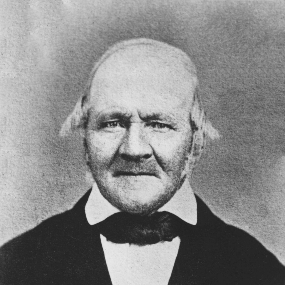
Apostle-pioneer-relatives
John Benbow, courtesy of the Church History Biographical Database. All rights reserved.Elder Wilford Woodruff baptized John Benbow and his wife on March 6, 1840, in England. This was just the beginning of the couple’s involvement in the Church; they funded the printing of the Book of Mormon and Church hymnals in England at the time, as well as at least 40 members’ way of travel to America.
After moving to the Americas, John Benbow lived frugally in order to assist immigrating Church members, contrasting his previous home and farm in England. He supported the Nauvoo Legion, the Nauvoo House and Temple building, loaned the Church money when it was impoverished and pledged all his holdings as bail when Joseph Smith was falsely arrested.
Elder Holland said: “I need to live a life as exemplary in its own way as those pioneer ancestors’ lives were in theirs. I need to live so my children or grandchildren or great-grandchildren will want to remember me and tell stories of my faith, just as we tell these stories of our earlier generations.”
Elder Dieter F. Uchtdorf
Toward the end of World War II, Elder Uchtdorf’s mother took her children and fled from Czechoslovakia to stay with her parents in Germany in the winter of 1944. Elder Uchtdorf recalled this time as one of “fear and hunger,” even as a 3-year-old.
As the family traveled on one of the last refugee trains headed West, his mother got off the train in search of food for her children, only to lose the train. It had been relocated within the train station to a remote area, but not knowing this, she looked around frantically for the train holding her children, praying desperately.
Elder Uchtdorf described her as someone who acted on her faith and hope. She provided for the family while her husband was away at war. Of the train incident he said, “I know with certainty: her faith overcame her fear, and her hope overcame her despair.”
After reaching Germany, the family began attending church as a result of a friendly invitation that Elder Uchtdorf’s grandmother received, leading to regular activity in the Church.
Elder David A. Bednar
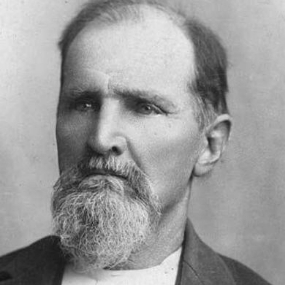
Apostle-Pioneer-relatives
Luke Syphus, courtesy of the Church History Biographical Database.All rights reserved.Elder Bednar’s great-great-grandfather Luke Syphus and his wife were traveling to Australia at the time they met Joseph Ridges. The Syphuses had joined the Church prior to their marriage and introduced Ridges to the Church.
Ridges said: “I could not have told what a Mormon was as the fame or otherwise of the Latter-day Saints had not then become so widely known as it is today.” It was the “good habits and kindly ways” of the Syphuses that encouraged the Ridges to discover more about the Church.
In Sydney, Australia, Joseph Ridges began to build an organ, the first to be built in the country. Upon Luke Syphus’ inquiry to Ridges if he would donate the instrument to the Church, Ridges did, and it was shipped to America. Brigham Young was impressed with Ridges work and asked that he build another for the Salt Lake Tabernacle.
Elder Quentin L. Cook
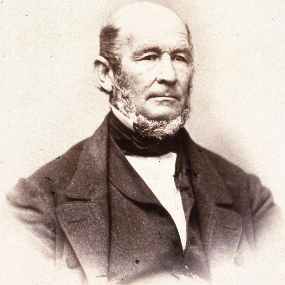
Apostle-pioneer-relatives
Heber C. Kimball2022 by Intellectual Reserve, Inc. All rights reserved.In 1837, a panic swept across Great Britain and America, causing economic strain. Despite these circumstances, the Prophet Joseph Smith felt inspired to call Heber C. Kimball to England, becoming the Church’s first full-time mission president.
“The moment I understood the will of my Heavenly Father, I felt a determination to go at all hazards, believing that He would support me by His almighty power,” Heber C. Kimball said. While he was overwhelmed by his new calling, he was determined to fulfill what the Lord asked of him, allowing his faith to take over.
He said, “Although my family was dear to me, and I should have to leave them almost destitute, I felt that the cause of truth, the gospel of Christ, outweighed every other consideration.”
Elder D. Todd Christofferson
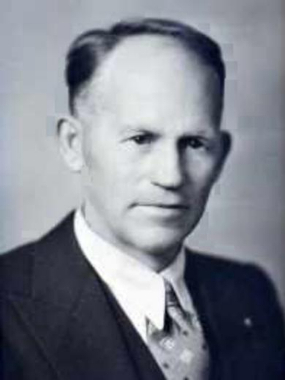
Apostle-Pioneer-relatives
Helge V. Swenson, courtesy of the Church History Biographical Database. All rights reserved.Helge V. Swenson was Elder Christofferson’s maternal grandfather. His family joined the Church in Sweden in the late 1800s, and Helge, age 8, successfully pled with his parents to let him be baptized too.
Helge’s father, Swen, lost his job as a teacher when the family joined the Church. They were forced to emigrate to Utah a few at a time. Helge and his father were the last, but Swen was called on a mission to remain in Sweden and translate the Doctrine and Covenants into the Swedish language. At age 11, Helge had to make the trip alone with the help of another immigrant family he didn’t know.
Once in Utah, most of the Swenson children had to live separately with other families and work for room and board. Helge missed being with his mother but was fortunate to be with a family who helped establish him firmly on the covenant path.
Helge became the Utah County agricultural inspector, a position he held for 40 years. He became a beloved patriarch in the Timpanogos Utah Stake, with his wife, Adena Warnick, as his scribe. Despite the deprivations and hardships of his life, or perhaps because of them, Helge became a man known for his gentleness and love.
Elder Neil L. Andersen
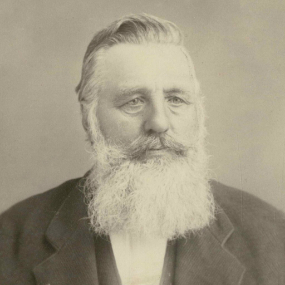
Apostle-pioneer-relatives
James Morgan Keller, courtesy of the Church History Biographical Database.All rights reserved.Elder Andersen expressed immense gratitude as he reflected on his ancestors and those of his wife, Sister Kathy Andersen, and their journeys to joining the Church.
Elder Andersen’s great-great-grandfather James Morgan Keller joined the Church in 1852 in Denmark and later traveled to Salt Lake City, arriving in 1854. He remained faithful throughout his life and eventually returned to Denmark to serve a mission.
Sister Andersen’s great-grandfather Daniel Henry Arline was born in 1841 in the United States, in the state of Georgia. Eventually he and his family joined the Church in Florida. He made the trek to Utah in 1902 with 13 children to be sealed in the temple and then returned to Florida where he remained faithful throughout his life.
Elder Andersen said he recognizes the devotion and faithfulness of these Latter-day Saints — despite the many challenges faced throughout life — and is thankful to know their stories.
Elder Ronald A. Rasband
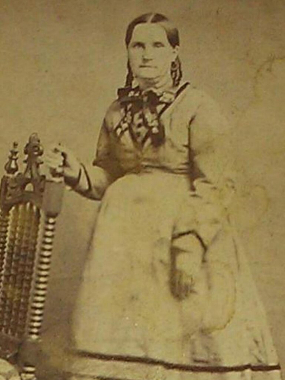
Apostle-pioneer-relatives
Sarah Elizabeth Moulton, courtesy of the Church History Biographical Database. All rights reserved.The story of Elder Rasband’s great-grandmother tells of her marrying her rescuer. Sarah Elizabeth Moulton was young and living in England when her parents joined the Church through baptism. After years of saving money in a fruit jar, the family finally gathered enough to travel to America in 1856, with the help of the Perpetual Emigration Fund.
Part of the Willie Handcart Company, the family of 10 endured limited food supply and extreme weather conditions along with the others as they made the trek to the Salt Lake Valley.
A rescue team was sent by President Brigham Young to help the company, reaching them on Oct. 21, 1856; the pioneers arrived at their destination less than a month later. One of these rescuers was John Bennett Hawkins, Elder Rasband’s great-grandfather, who eventually married Sarah Moulton.
Elder Rasband expressed gratitude for pioneers throughout the world. He said: “What moved them on? What pushed them forward? The answer is a testimony of the Lord Jesus Christ.”
Elder Gary E. Stevenson
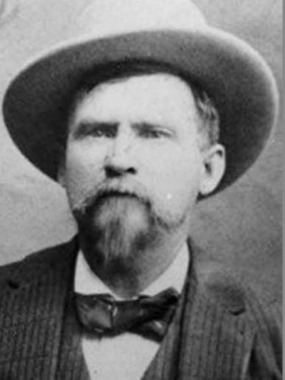
Apostle-Pioneer-relatives
William Homes Walker, courtesy of the Church History Biographical Database.All rights reserved.Elder Stevenson’s fourth great-grandfather William Holmes Walker provided a selfless example of sacrificing for the work of the Lord. William received a mission call in August 1852 to Cape Town, South Africa. A dedicated husband and father, he left behind his family as he set off to serve.
His assignment was not an easy one requiring travel time to get to his mission of nearly seven months with his missionary service spanning over almost five years. Shortly after arriving in Cape Town Elder Walker and his companions, atop a nearby prominent mountain, organized the first branch of The Church of Jesus Christ of Latter-day Saints on the continent of Africa.
Elder Stevenson reflected on such devoted individuals. He said, “We owe much to generations of missionaries who have gone before us on whose shoulders we stand.”
Elder Dale G. Renlund
Åke Renlund, Elder Renlund’s father, was one of the first native Finns to serve as a missionary in Finland after the official mission was organized in 1947, seeing as most missionaries at the time were from America. Assigned as a traveling elder throughout the Swedish communities of Finland, he served a short-term mission and did so with great effort.
In February 1950, Finnish Mission President Henry A. Matis wrote of Elder Åke Renlund that he was “doing a fine work” and that he and his companion were “having a successful venture.”
Upon Elder Åke Renlund’s release on March 25, 1950, President Matis said in a letter to him, “You have represented the Church in a pleasing manner before our Father in Heaven.”
Elder Gerrit W. Gong
Elder Gong said of his parents: “First-generation converts to the Church, Walter and Jean’s heritage of faith in Jesus Christ blesses family generations on both sides of the veil. Second-generation immigrants, Walter and Jean are also our educational, professional and community service pioneers.”
According to Elder Gong, Walter and Jean Gong illustrated how cultures may be united, including the gospel teachings, Chinese practices and immigrant values. Jean Gong, now 96 years old, said joining the Church has made all the difference for her, her husband and family.
In honor of Walter Gong’s 100th birthday, family members gathered this month at the Golden Gate bridge and traveled to Merced, California, where he was born. Elder Gong reflected on Walter and Jean Gong’s life as they ran their small hand-laundry business, taking things day by day with their best efforts.
Elder Gong said, “Today, we applaud the pioneer spirit of our forefathers, less in looking back and more in looking forward — as they did — to the future with faith, optimism, determination, sacrifice and gratitude.”
Elder Ulisses Soares
Modern-day pioneers are ever present today, Elder Soares has witnessed. His parents joined the Church when he was a young boy. “They were good people, but when they were introduced to the gospel, they had some worldly habits,” he said.
What really helped them feel loved and welcomed into this newfound community, despite these differences, was the attention and friendship of a few other families in their small branch who made sure to reach out to them with fellowship.
Elder Soares values diversity and encourages all to embrace and learn from the differences in others, becoming more loving, understanding, and more like the Savior. He explains that his parents were raised in a certain culture and way of thinking. All should respect others, no matter dissimilarities.
He said: “We should never make any discrimination because of the way someone dresses or because of the way they think. We are all children of God. We come from the same spiritual root.”